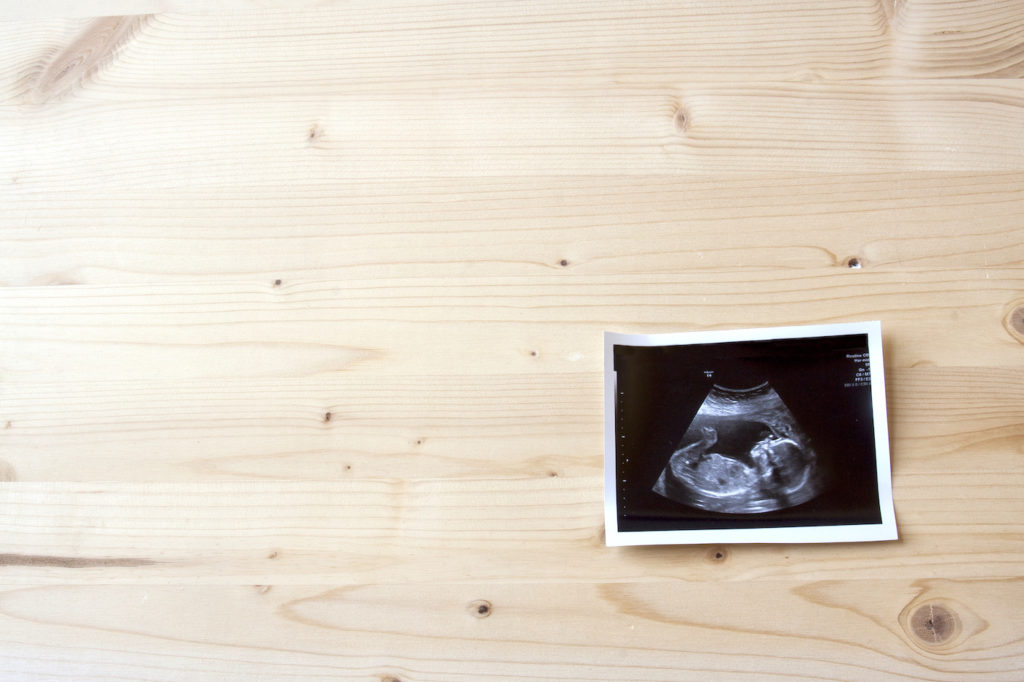Last month, the Kansas Supreme Court handed down its long-awaited decision involving a state statute entitled “The Kansas Unborn Child Protection from Dismemberment Abortion Act.” That law banned dilation and evacuation (D&E) abortions, procedures used largely in the second trimester of pregnancy when, due to fetal size and development, suction abortion is no longer available. Through D&E, the unborn child is dismembered while still alive. He or she is then extracted from the womb one piece at a time.
The decision, which took the court over two years to render, is 199 pages in length. Its full text is worth reading, both for those concerned about the practice of abortion in Kansas and for anyone concerned with the balance between judicial and legislative power.
In their per curiam decision, six judges examined whether Section 1 of the 1859 Kansas state constitution protects the right to abortion, referred to throughout as a “woman’s right to determine whether to continue her pregnancy.” Section 1 states: “All men are possessed of equal and inalienable natural rights, among which are life, liberty, and the pursuit of happiness.” Declaring abortion to be among Kansans’ “fundamental rights,” the court held that any restriction on abortion is subject to “strict scrutiny,” requiring the law to further a compelling government interest and to be narrowly tailored to that interest.
In so holding, the court imposed a standard on abortion laws that is stricter than the current federal one (the “undue burden” standard of Casey). Unlike either the strict scrutiny of Roe or the undue burden of Casey, the standard gives no greater weight to the state’s interests as the child’s development progresses. Presumably, the state of Kansas must meet the strict scrutiny standard for any regulation on abortion, including those related to maternal health, regulation of the medical profession, public funding, informed consent, parental consent, or an interest in the child’s “potential life,” whether in the first trimester or in the birth canal.
Start your day with Public Discourse
Sign up and get our daily essays sent straight to your inbox.A Natural Right to Abortion?
To reach its conclusion, the majority rejected the idea that the language of Section 1 was merely hortatory or preambular in nature. Instead, it concluded that the framers of the Kansas constitution intended to confer natural rights through Section 1 and that they intended those rights to be judicially protected against governmental action.
The majority turned then to examine “what a natural right entails,” stating that this required an investigation of “the historical—the common-law—basis” of the concept. This involved tracing “natural rights” to their Lockean origins. The judges focused especially on the understanding of “liberty” as flowing from self-ownership, citing John Locke’s declaration that “every Man has a Property in his own Person.” On this basis, the court determined that liberty encompasses a woman’s right to end her pregnancy through abortion. To be clear, in reaching this conclusion, the court did not limit itself to an investigation of the content of the term “liberty” at the time of the drafting of the Kansas state constitution. Rather, it cited an array of quotations from various sources across the centuries. The sources ranged from various seventeenth-century political philosophers writing about the importance of “personal autonomy” and “bodily integrity” to numerous state and federal Supreme Court cases containing language about the right to control one’s body or about the importance of parental rights.
Most ironically, the court asserted that the “natural right” to abortion is the sort of “parenting decision” encompassed by liberty, quoting a passage by Locke in which he explains that both mothers and fathers owe their vulnerable children duties of care (even going so far as to say that a child has a “right” to be nourished and maintained by her parents). Since the court did not explain further, one wonders how it discerned in the child’s natural right to be cared for by her parents a mother’s right to end the life of that same child.
A Failed Attempt at Serious Philosophy
Although the majority purported to engage in a serious philosophical inquiry into the nature and scope of natural rights, they did not mention at all what might be meant by the explicit textual reference in the Kansas constitution to a natural right to life or its possible importance to the case. Nor did it once engage the science of embryology and what it tells us about the existence and development, from its very first moment, of a separate, genetically unique, self-directed human organism in the womb.
Similarly, the majority ignored completely the many available salient critiques of its understanding of “autonomy.” The court began its section on this topic as follows:
Denying a pregnant woman the ability to determine whether to continue a pregnancy would severely limit her personal right of autonomy. And abortion laws do not merely restrict a particular action; they can impose an obligation on an unwilling woman to carry out a long-term course of conduct that will impact her health and alter her life.
The court assumed the truth of its own philosophical conclusion without any supporting reasoning. It also failed to consider whether and how the biological facts of pregnancy affect a woman’s “bodily integrity.” The court ignored nuanced accounts of autonomy in the context of pregnancy, such as that articulated by legal scholar Erika Bachiochi. She writes,
It is not abortion restrictions that deny [equal] autonomy to women: the state of pregnancy itself points to the biological fact that, when pregnant, a woman is not autonomous. She is carrying a new, albeit dependent and vulnerable human life within her. Thus, unlike a man who has fathered a child, a pregnant woman cannot simply walk away: to approach the desired autonomy of the child-abandoning man, she must engage in a life-destroying act.
She concludes, “It is a peculiar breed of feminism that relies on the subordination of and violence against another class of human beings in its efforts to elevate women.”
Indeed, it is a peculiar breed of feminism that ignores the voices of pro-life women. The court ignored the fact that the D&E ban at hand was supported by a majority of the forty-one women then serving in the Kansas legislature. While this fact wouldn’t ordinarily be relevant to an “original meaning” inquiry, the court had stated that it could not be “tethered to prejudices from two centuries ago.” Because of this, the court deemed the state’s early criminal abortion laws irrelevant to what the framers of Section 1 meant by “liberty” (because they concluded the founders of Kansas were operating under an unenlightened gender bias). And yet, it also ignored the numerous pro-life laws in Kansas enacted in the last forty years, over thirty of which have been enacted since 1997.
Justice Caleb Stegall, the lone dissenter, critiqued this pastiche of an historical argument by stating that in it “all the luminaries of the western legal tradition—from Sir Edward Coke and William Blackstone to Edmund Burke and Thomas Jefferson—would celebrate and enshrine a right to nearly unfettered abortion access. In this imagined world, the Liberty Bell rings every time a baby in utero loses her arm.”
Like the majority, Justice Stegall sought to determine the meaning of Section 1, but he limited his inquiry to the legal principles at stake when the Kansas constitution was written. Therefore, although he pushed back at the majority’s expansive and evolving view of Lockean “liberty,” concluding that Locke was less interested in delineating rights than in describing the structure of self-government, he declined to engage further in philosophical debate detached from the actual language and history of the Kansas constitution.
Bleeding Kansas: The Heart of the Story
Stegall rejected the claim that Section 1 was merely hortatory, but instead of concluding that it conferred judicially enforceable rights, he found that the original public meaning of that language was structural rather than rights-conveying. In Stegall’s history of the debate between the two views of sovereignty, Kansas (and its constitution) is at the heart of the story. It is there especially that the contrary understandings of the principles in the Declaration of Independence played out in the battles of the “Bleeding Kansas” era over whether Kansas would enter the Union slave or free. As Stegall states,
If any state has a historical claim to a seat of honor on any dais celebrating the triumph of the principles of the Declaration of Independence in the decades surrounding the Civil War, it is our beloved home of Kansas. More than any other state, ours was birthed in the crucible of pitched battle between two opposed and irreconcilable ideas—government by consent or consent by government.
According to Stegall, the proper interpretation of Section 1 reveals that, in constituting a government, the people of Kansas did so with the limited purpose of creating an “organized, stable, peaceful commonwealth.” In doing so, they retained their natural rights, which are not subject to redefinition by the government and can only be limited by the legislature’s consideration of the common good. Under this view, it is the role of the legislature to act within its limited authority (known as its “police power”) to make laws for the common good. The role of the judiciary is to ensure that the legislature acted within the scope of that power.
So understood, the role of the court under Section 1 of the Kansas Constitution is not to determine the existence and scope of an abstract and ever-evolving right, but rather to assess whether the government has acted within its limited authority in areas reasonably related to the common good. Far from being a low bar, determining whether a law reasonably promotes the common good is the kind of narrow question suitable to human (and fallible) judges. In this view, the judiciary is a check on the legislative branch, but in such a fashion that respects the legitimate roles of both the legislature and the judiciary and avoids the exercise of arbitrary power by either branch.
Under this standard, although he reserved judgment for remand after a full trial, Stegall suggested that such a ban enacted to protect “unborn life and require humane abortion procedures” can be considered a reasonable exercise of the government’s authority, noting that even the United States Supreme Court has acknowledged that these are reasonable governmental concerns, touching on the common good.
There remains much to be unpacked about Stegall’s jurisprudential view and its potential application. For example, how would this approach look in the context of economic regulations? Since Lochner, there has been vigorous legal scholarship critiquing judicial review in the context of economic liberty—from both conservatives and liberals. Some scholars propose that a “new originalism,” similar to that proposed by Justice Stegall, would allow conservative jurists to coherently support judicial protection of economic liberties through application of something like Stegall’s rational basis “with a bite” standard. Another question involves the term “common good.” In examining whether a particular piece of legislation reasonably promotes the common good, will judges be tempted to the same sort of inappropriate philosophizing of which Stegall accuses the majority? Or rather, is his approach a way forward in the contentious judicial wars, allowing judges to give moral content to documents such as the Constitution, but in a way that involves judicial humility and restraint? Finally, how would Stegall’s articulated test apply in the context of specifically enumerated rights (such as in the United States Constitution, or in other sections of the Kansas constitution)?
What to Do Now
In the wake of this decision and in the political context of abortion, the only remedy left to the people of Kansas is to pass a constitutional amendment to declare that there is no “fundamental right to abortion” in the state’s constitution and to allow the legislature to make reasonable laws about abortion. But there is a larger question at stake as well. As Justice Stegall warns:
Constitutional structure is the very thing securing and guaranteeing the full range of human liberty. History and reason suggest that those who, in the name of liberty, tear down that edifice will wind up out in the political elements, unsheltered and exposed to the cold wind of every arbitrary power.
Those who understand this danger have an enormous challenge to come up with practical ways to restore balance to our system of government, respecting the legitimate roles of both the legislature and the judiciary.














